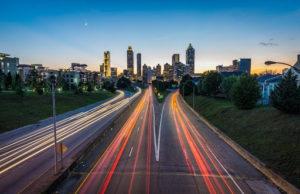Communicated Content – Drivers can rely on algorithms to reduce the risk or error in traffic with a complex system, but the final decision must remain with the driver.
Our efforts to achieve a better and more sustainable future for all include a call for action to reduce the annual rate of road deaths globally. It seems that faster progress on AI is vital to make this happen, especially in low-income countries, where most lives are lost on the streets each year. Recent findings hint that approximately 1.3 million people die annually as a result of road traffic accidents. Between 20 and 50 million more experience non-fatal injuries, with many suffering a disability.
Advanced software systems or AI can help in different ways, including better analysis and collection of crash data, improving the road infrastructure, the efficiency of post-crash response, and driving innovation to the regulatory bodies. However, for this to be possible, we need equitable access to data and ethical use of algorithms, which many states currently lack, leaving them unable to identify viable road safety solutions.
Reducing Human Error
Human error remains a major cause of any car accident. Many concerned auto manufacturers are hard at work equipping their vehicles with various features that will support drivers in reducing the potential for making mistakes that will eventually lead to an accident. But human error is no longer a challenge. The latest tech innovations have significantly decreased the number of car accidents and will continue to do so until we achieve the minimum road death rate.
We see cities like Barcelona implementing AI-bases systems to help reduce road traffic accidents by identifying common patterns. This could help urban planners rethink the city’s infrastructure in an effort to reduce collisions and make the world’s streets safer.
With massively populated urban areas expected to continue to attract people seeking better living conditions and career development, that’s going to be a key consideration. According to WHO, more than half of all deaths on the road are among “vulnerable” road users like motorcyclists, cyclists, and pedestrians.
Real-Time Analytics to Save Lives
A series of studies have shown that the faster emergency teams can reach the crash site, the lower the risk of accidents. Every minute saved can make a considerable difference to survival rates.
According to AccidentClaimsAdvice.org.uk, implementing advanced video analytics on live streams generated by existing CCTV infrastructure, for instance, could help achieve a timely response.
Real-time video stream processing can help authorities detect and flag accidents or traffic violation events as they happen. It can help the city’s traffic operations or control centre trigger recent events to dispatch immediate help and inform them the second they arrive.
This information may include automatic identification or smoke or fire at the scene and whether anyone has been detected getting out of the car – providing insights on the severity of the collision.
Prevention of Accidents with Real-time Analytics
Real-time analytics could help realise the vision zero. These insights could play a key role here by identifying dangerous behaviour and supporting the implementation of rules before problems escalate.
More often than not, a great number of accidents take place at junctions. AI-driven systems can detect vehicles illegally stopping in junctions so that action can be taken to avoid collisions as well as expensive traffic jams.
Analytic systems can also signal hazardous behaviours like vehicles driving on pavements or drivers parking and walking in dangerous places. Cars can also be classified by type to ensure they’re only driving in assigned lanes.
Also, the scene change detection feature provides automatic alerts when objects that could cause serious traffic accidents, such as an object dumped in the road or a falling tree blocking the road.
Lowering the duration and frequency of traffic jams is also vital in massively clustered cities. While traffic congestion reduces speed, it also pollutes and leads to impatient and aggressive driver behaviours such as U-turns, hasty lanes changing, speeding after the jam is over, and so on.
AI-driven traffic analytics can help drivers and authorities when and where congestion is likely to happen. They can count and classify vehicles in real-time, create dashboards and heatmaps, and enable pre-emptive action to keep a steady traffic flow.
The Case of Ashdod
Ashdod, a city in Israel, has employed a smart traffic monitoring system to improve road safety. The AI-driven system, which uses the NVIDIA Metropolis smart video analytics framework, monitors live video streams from crossroads, intersections, roads, and streets to obtain a real-time behavioural understanding of traffic events and actions. In turn, this enables Ashdod authorities to maintain a steady traffic flow and prevent congestion.
So far, the Ashdod authorities are satisfied with the result and very proud to be at the forefront of smart city technology by being the first city in Israel to employ this behaviour technology for the benefit of the citizens.
ACC: Autonomous Cruise Control is Thing Now
For a long time, cruise control has made long-distance drives more bearable for us. Now, a more advanced feature can help you adjust the speed of the car to help you maintain a safe distance from the vehicles in front of you.
This can help you relish the benefits of long driving without the need to hit the brakes constantly to reset it. A more advanced option in Autonomous Cruise control is the Cooperative Adaptive Cruise Control, which gathers data from mobile infrastructure, roadside beacons, and satellites to determine the distance between other cars and better adjust.








